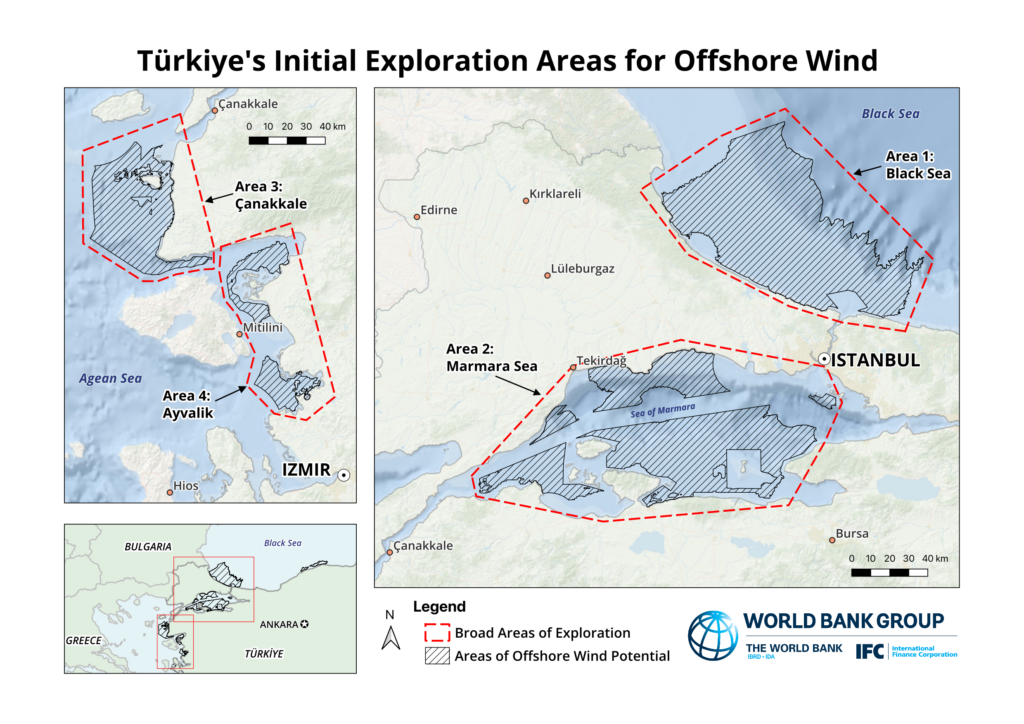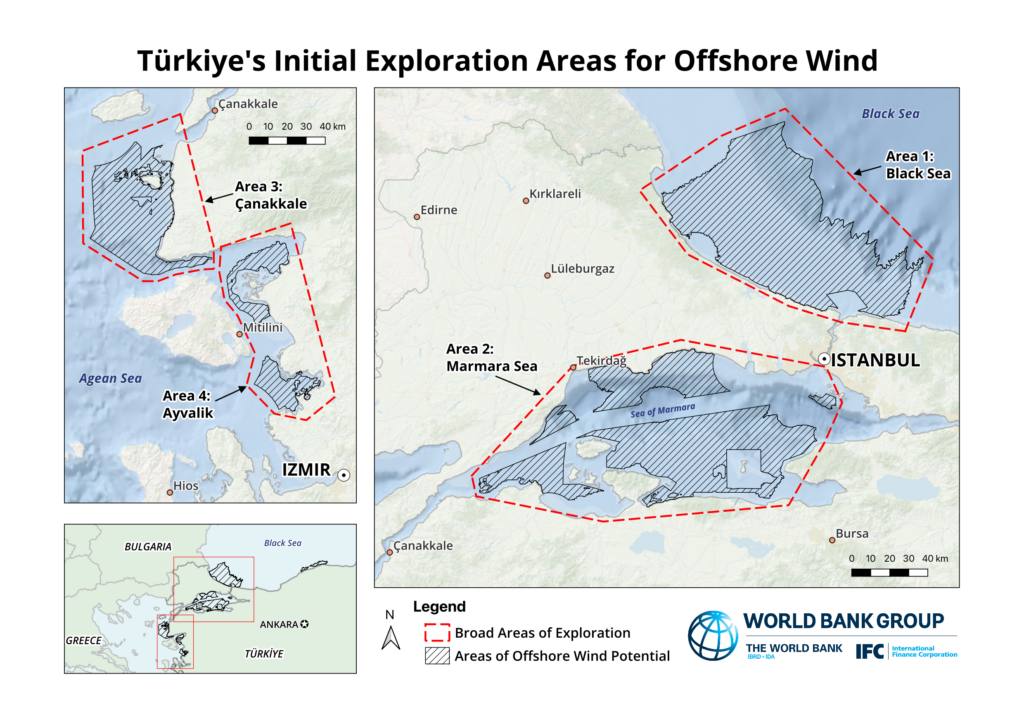The World Bank Group, in partnership with Türkiye’s Ministry of Energy and Natural Resources, has introduced an offshore wind roadmap for the country, projecting up to 7 GW of capacity by 2040.
Türkiye targets 5 GW of offshore wind power capacity by 2035. The World Bank estimates Türkiye’s waters hold a technical offshore wind potential of 75 GW.
Prime offshore wind resources near high-demand areas could provide significant domestic power. Most suitable sites have water depths over 50 meters, ideal for floating foundation solutions.
The World Bank highlights Türkiye’s strategic location near Europe and Asia, offering potential as a regional clean energy hub. The nation’s industrial and skilled workforce, with expertise in onshore wind and maritime industries, supports offshore wind supply chain advancement.
“Offshore wind is key to Türkiye’s net-zero transition, enhancing onshore wind and solar efforts, while boosting supply chain growth and job creation,” said Humberto Lopez, World Bank Country Director for Türkiye.
The roadmap identifies four initial exploration areas in the Aegean Sea (Çanakkale and Ayvalik), the Sea of Marmara, and parts of the Black Sea.
Considering environmental, social, and technical constraints, the development potential is about 66 GW, 60% of Türkiye’s current generation capacity, according to the roadmap.
Most exploration areas are deep waters suitable for floating technology, offering over 59 GW across 13,270 square kilometers. Shallow waters hold about 6.8 GW potential over 1,510 square kilometers.

“The roadmap outlines recommendations to realize this renewable energy source, focusing on policy development and minimizing environmental impacts,” said Sean Whittaker, Co-Lead of the World Bank Offshore Wind Development Program.
The report presents two development scenarios. The “low growth” scenario projects 3.5 GW by 2040, potentially creating 32,000 full-time job years and adding USD 4 billion to the economy with moderate government action.
The “high growth” scenario targets 7 GW by 2040, potentially generating 110,000 job years and USD 16 billion in economic value.
The roadmap suggests 21 actions for the government, including setting long-term energy goals, implementing regulatory frameworks, establishing a bankable PPA, enhancing health and safety, upgrading grid infrastructure, and developing local supply chains.
The World Bank is aiding the Ministry of Energy with the “Türkiye – EU IPA Energy Sector Program Phase IV Project – Offshore Wind Support,” aiming to enhance investment potential through site de-risking and capacity building by 2027.

ADVERTISE ON OFFSHOREWIND.BIZ
Get in front of your target audience in one move! OffshoreWIND.biz is read by thousands of offshore wind professionals daily.
Follow offshoreWIND.biz on:
Original Story at www.offshorewind.biz
